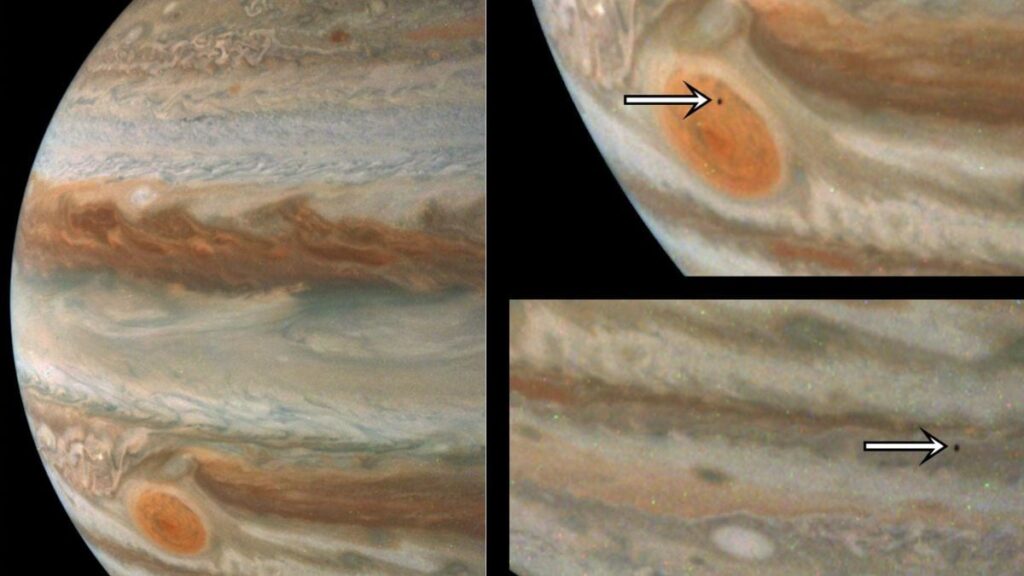The Fascinating World of Jupiter’s Moon Amalthea
Jupiter, the largest planet in our solar system, is home to a staggering total of 95 known moons, with Amalthea being the fifth largest among them. Discovered earlier this year by NASA’s Juno spacecraft, Amalthea provided a unique opportunity for scientists to study its surface while it was crossing over the infamous Great Red Spot of Jupiter, a massive storm that has been raging for centuries.
A Unique Cosmic Encounter
During its 59th close flyby of Jupiter on March 7, the Juno spacecraft captured an extraordinary image of Amalthea. In contrast to the enormous scale of Jupiter, Amalthea appears as a small black dot, showcasing its modest size. Positioned about 181,000 kilometers above Jupiter’s swirling clouds, this moon stands out against the backdrop of the planet’s tumultuous atmosphere.
Size and Shape: More Than Meets the Eye
Contrary to the grandeur of its parent planet, Amalthea’s dimensions are surprisingly modest. The moon’s longest axis measures about 250 kilometers, while its narrowest point stretches to only 128 kilometers. Many scientists describe Amalthea’s irregular shape as resembling a potato, further emphasizing that it is more of a collection of rubble rather than a solid geological body. This presents a unique opportunity to study the composition of celestial bodies that are not conventional rocky planets.
Fast Orbit and Intriguing Motion
Amalthea’s orbital speed is another intriguing aspect of this moon. It completes a full orbit around Jupiter in just 0.5 Earth days, showcasing how quickly it navigates the gravitational pull of the massive planet. This rapid revolution places Amalthea in a peculiar position as one of Jupiter’s rapidly orbiting moons, contributing to the complex dynamics of the Jovian moon system.
Scientific Mysteries Surrounding Amalthea
Despite its small size, Amalthea has baffled scientists, primarily due to its unusual heat emission. Interestingly, it appears to emit more heat than it receives from the Sun, leading researchers to theorize about the origins of this warmth. One prevalent theory attributes the heat generation to gravitational interactions with Jupiter, either directly from the planet or through tidal forces that stretch and compress the moon’s structure.
The Great Red Spot: A Cosmic Neighbor
Amalthea’s close encounter with Jupiter’s Great Red Spot, a colossal anticyclonic storm that spans approximately 12,500 kilometers, adds another layer of intrigue to its exploration. The Great Red Spot has fascinated astronomers for generations, demonstrating how Jupiter’s complex atmospheric conditions influence its moons. Amalthea’s proximity to this staggering meteorological phenomenon allows scientists to investigate potential interactions between the two, offering insights into the intricate relationships within this gas giant’s environment.
Conclusion: Bridging the Gap Between Earth and the Giant Planet
Amalthea may be small in comparison to its majestic parent, but its unique characteristics and enigmatic qualities make it a point of interest for astronomers and planetary scientists alike. As missions like Juno continue to explore the mysteries of our solar system, Amalthea stands out as a reminder of the diverse and complex nature of celestial bodies. Understanding moons like Amalthea not only sheds light on the formation and evolution of our solar system but also invites speculation about the existence of similar bodies elsewhere in the universe.
